
Melbourne Winter Fishing Spot #1: Port Phillip Bay Squid
Species: Squid
- Winter squid fishing (eging) is amazing around the entire Victorian coastline, but for Melbournites the fishing in Port Phillip Bay is hard to go past.
- Squidding can be done from boat, kayak, pier or the shore, all you need is a suitable rod and reel combo and some decent jigs and you’re in business – go forth and start looking for rocky, reefy shorelines!
- In the winter it’s common to get clear, cold water, which suits the hunting style of squid….. in fact specimens of hood length 50cm are definitely possible in these months.
- Around the tide change seems to be the best time to target squid and Lee prefers the low tide change, although dawn, dusk and after dark are always worth a try on any tide.
- Avoid dirty water or freshwater for squidding and focus on areas from Frankston to Sorrento. Mordialloc is a great pier, but fish on the reef side, not over clean sand.
- You can use most light to medium spin outfits to target squid, but the best option is a dedicated squid rod. These are long (8’ to 8’6” ) for long casting and have a longer butt to help even more with the casting. It’s important to give your jig a sharp jerk, which is aided by the longer rod and butt. Squid rods also tend to be slow tapered, giving them a soft action that helps reduce tearing the barbs from the squid. To cast, use it like a surf rod, don’t “snap” the cast.
- There are dedicated squidding reels also, but Lee uses the Shimano Vanford 2500 or 3000. Reels for squid fishing need to have sturdy gears because the jigging action will wear out cheap reels. Load the reel up with good quality Gosen or X-Braid from YGK and buy it on diameter, not strength. Lee uses 22lb braid but it’s super thin and doesn’t form wind knots like the ultra-fine 8lb braid can.
- Don’t be afraid to use heavier leaders in areas where you might need to rip a jig out of weed or structure. Lee uses 10lb for fishing relatively clear water but goes up to 15 or even 20lb leader in heavier structure.
- Jigs ranging from 3.0 to 3.5 sizes work best. Don’t be put off by their size, they are no bigger than a pilchard and Lee finds that squid grab the bigger jigs more aggressively.
- UV white coloured jigs are good, but Lee likes patterns with red or gold underfoils and green backs with whatever colour on the sides. In Port Phillip he finds that pink jigs work well and in Westernport he’ll go for orange. But for really big squid of 2.5 to 3 kg a black jig is hard to beat.
- Lee highly recommends experimenting with colours when the fish are biting, rather than switching colours only when you can’t get a bite.
- It’s not a bad strategy to have a couple of lines hanging out the back of a drifting boat, rods in the rod holders. Give them just enough line that they skim a little above bottom.
- For active fishing, from a boat, pier or shore make a long cast and let the jig sink all the way to the bottom (from a boat it’s best to cast ahead of the drift). Then with the long squid rod, give the jig and aggressive one-two rips, winding quickly between rips. It’s important to rip quickly to get the lure up off the bottom and reduce snagging.
- If you’re land based, suspending a jig beneath a bobby cork float just above the bottom isn’t a bad strategy.
Melbourne Winter Fishing Spot #2: Port Phillip Bay Pinky Snapper.
Species: Snapper
- For more details on Mebourne snapper check out Lee’s Snapper Episode (ALF Episode 276).
- Most people think of Port Phillip Bay snapper as being a summer pursuit, but there are good numbers of pinkies right through the year – and they can be very accommodating if you flick soft plastics around reef edges in 2-4m of water during the early morning or late afternoon.
- Most fish will range from around half to one and a half kilo sizes, which are excellent fun on a 2-4kg bream stick with 2500 size reel and 8lb braid.
- Be sure to use strong jig heads such as the TT HeadlockZ or Berkley Nitro jig heads in 1/8 to 1/6 ounce weights, perhaps up to 1/4 at times in deeper water. The idea is for the plastic to sink down super slowly without ever reaching the bottom. Most of the better fish will come from high in the water column, so use the lightest head you can get away with.
- Small Berkley gulps and other jerkbait styles (the long slender lures with the forked tails) in the 3-4” sizes are popular, but Lee finds using bigger lures of 5-6” and even 7” can result in stacks of missed bites, but the ones that hook up are usually better quality fish. Baitfish colours are good, but snapper also love pink, nuclear chicken and other bright colours too.
- If you’re boating, it’s important to cast ahead of the boat so the lure can waft down on a slack line and not be dragged unnaturally by the boat.
- Trolling for snapper is also very effective in these areas. Work the reef edges in two to eight metres of water, but especially the 6-8m depths using small medium and deep diving hard bodies. For bigger fish the X-Rap Magnum 10 is a reliable option, but snapper also seem to love barra and cod lures in bright colours and noisy rattles.
- Be warned…… the bite of a snapper on the troll is savage!
- Watch the sounder the whole time you’re trolling as it’s a great way to find new ground.
- If there is a decent wind blowing you can chase these pinky snapper all day long. The rougher it is, the more aggressive the fish and often the shallower the water too.
Melbourne Winter Fishing Spot #3: Vic West Coast
Species: Southern Bluefin Tuna
- OK, so not strictly a Melbourne fishing spot, but there is tons of southern bluefin tuna action within an easy drive of Melbourne for a day trip. Also, check out Lee’s full interview on Southern Bluefin Tuna (ALF Episode 175).
- The school fish of 5-20kg are still around, as are the jumbo barrels of 100kg plus, but recently there have been good numbers of 40-80 kg fish around. These mid-sized fish are reaching breeding age and haven’t been seen around Vic for a lot of years – a great sign for the future!
- Tuna can be unpredictable – sometimes you’ll catch them on a 12” lure and other times on a 6” one. The only consistent thing is that they love being in shallow water from 30-60m deep.
- Capable boats and skippers are important because even if you’re not far offshore you might need to run 30km down the coast. Plus, southern bluefin tuna love windy, rough conditions. Northerlies of 15 knots with swells of 2-3m usually evoke the most spectacular action.
- Skirted lures and diving lures can be taken aggressively a lot of the time, but equally often they can be frustrating for seeming not to take anything you throw at them.
- Lee’s favourites are the Marlin Magic Bullet in pink, silver and purple colour combinations. He’s never caught a jumbo SBT on a lumo lure, despite their popularity but finds the Big Dog colour (UV blue inner and Purple UV outer) or Yak Attack (brown/orange) work well too, the latter especially when the tuna are on redbait.
- Sometimes you can be catching fish on one pattern and colour and then switch to another school of fish and find they are eating something completely different. Make sure you have multiples of each key lure in case you lose the one size and colour that’s working on the day.
- For trolling skirts a 7-8 knot boat speed is about right, but it varies between boats, so work out what speed gets the lures swimming properly. If a lure isn’t swimming properly, try bringing it up closer or dropping it back further until it swims properly.
- Tuna can be caught right up close to the boat at times, but Lee gets best results from long riggers and shotgun with the lures well back.
Melbourne Winter Fishing Spot #4: Melbourne Estuaries
Species: Bream and Estuary Perch
- Winter is a time when quality bream and estuary perch condition up and can be caught right through all of the estuaries around Melbourne from the Yarra, Maribyrnong, Patterson and Werribee to the estuaries around Westernport, Welshpool and Gippsland.
- Lee has also done a dedicated ALF interview on Estuary Perch Fishing in Melbourne estuaries.
- At this time of year these species school up in big numbers and can be targeted using vibes, blades, soft plastics and more.
- Land-based, kayak or boat fishing are all options, but the key is to find the schools because when they’re all schooled together there are lots of places where there are no fish.
- A Squidgies Wriggler in bloodwork colour or a 2.5” ZMan grub in motor oil colour will work well on the bream and perch around Melbourne when fished on light jig heads and worked near the bottom or down the front of a snag.
- Small hard bodies are deadly also, the Jackall Chubby, Rapala Fat Jacks and similar lures work well on bream, Lee likes more slender lure styles for the estuary perch, such the Jackall Squirrell and the recently released Shimano Pavlo Shads.
- Sometimes you’ll find mixed schools of bream and perch, other times the species will be schooled up separately.
- Dawn and dusk are good times to try, but both species can be found and caught at any time of day and under most conditions. Being in estuaries, this is a great option when the weather is too rough for fishing the bay.
- When schooling fish show up on your sounder screen as a bunch of arches it means that the fish are stationary and often that they’re not super active. When you find they appear on the sounder screen as horizontal lines, especially if they show as diagonal lines you can be confident that they’re moving around more actively and are more likely to be feeding.
- Don’t overlook the metro lakes, such as Albert Park Lake, as estuary perch have been stocked in these systems and there is some crazy good fishing to be had with perch of 40cm or more!
- Have a good selection of lures, especially for perch. They seem to be a species that get’s dialled in on a particular lure pattern at times and you’ll need to throw a few different ones to find the one they’ll take!
- Metal blades such as the Ecogear ZX40 can work a treat if dropped down to a school of bream or perch and gently hopped past them. It’s important to let the lure hit bottom between hops as most fish are taken when they pick up a stationary lure from the bottom.
- The advent of active target has enabled Lee to realise that it’s very easy to overwork a lure. Success often comes by using more subtle twitches of the rod tip.
Melbourne Winter Fishing Spot #5: River Trout
Species: Brown And Rainbow Trout
- Winter is when the trout fishing really fires, so break out the waders and the box of Rapalas.
- Once again, the metro lakes are all stocked and offer great opportunities for anglers of all ages and skill levels. But there are plenty of river fishing destinations within an hour and a half drive of Melbourne, such as the Goulburn, for example.
- River fishing for trout is a great way to understand fish behaviour and learn to read fish or read waterways.
- In flowing water it’s best to make casts up and across the current and bring it back past those small pockets where a fish might be sitting out of the current waiting for food to come by. It’s important not to cast too far upstream or you’ll need to wind too fast in order to maintain contact with the lure.
- A 1-3kg or 2-4kg spin rod with a 1000 or 1500 size Vanford reel is perfect and helps to keep the cranking speed down, which helps get the lure action right. Loading the reel with a good quality straight through 6lb fluorocarbon or, 6lb braid with a 6lb fluorocarbon leader will put you in the hunt.
- Some small hard body lures such as 5cm floating or sinking Rapala’s in brown trout or rainbow trout colour, a handful of Tassie devils for the deeper pools and some inline Celta or Vibrax spinners for shallow runs is the main kit. A few soft plastic paddletails on a 1/16 to 1/8 ounce jig head fished in the same way as the hard bodies work well too.
- When fishing the urban lakes, fish the windblown shores with heavier lures like the Tassie Devils, especially if the wind chop has stirred up plenty of muddy water.

Lee Rayner
Fishing Personality, TV Host
Over many years, Lee has left his mark on many styles of fishing for just as many different species. A very versatile angler, Lee is well known for his television productions, from “Tuna Bluefin Tactics”, “Snapper Fishing Tactics” and “Whiting Fishing Tactics” back in 2008 to his long running fishing show “Fishing Edge”, which takes him all over Australia fishing for every imaginable species.
Fishing In Hobart: A Bream Masterclass With Plinio And Deathy
Check out a swag of little known techniques and insights for fishing the Derwent River system for bream in this awesome interview with Plinio Taurian.
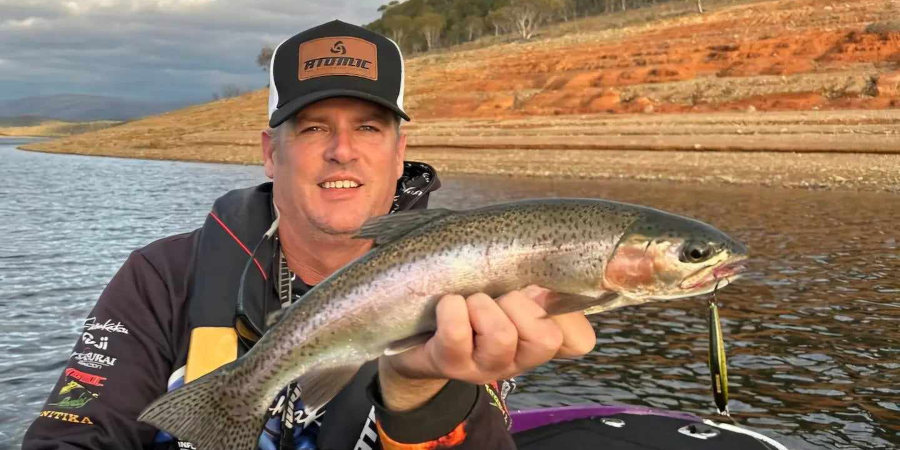
Lake Eucumbene Fishing: Mastering Trout With Nick Reay
Nick Reay has been fishing Lake Eucumbene for over three decades and understands the trout there very well. In today’s episode he share tips for stepping up your success in this system at any time of year.

Brisbane Squid Fishing Masterclass With Peter Herbst
Keen to perfect the art of catching quality squid from the shorelines of Moreton Bay? Peter Herbst’s masterclass on Brisbane Squid fishing will arm you with the knowledge you need to do exactly that. Land-based or boat based, everything you need to know is right here.
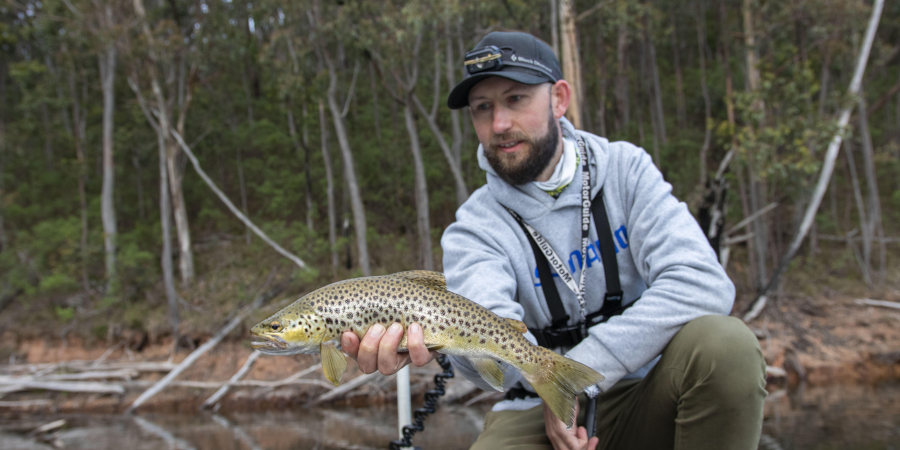
Fishing Lake Dartmouth: Trout Secrets With Matt Mildren
Cailin's chat with Matt Mildren is ALF EPISODE 672 Check out our archives for more information on Fishing For Trout!If you're planning a trip to Lake Dartmouth (aka Dartmouth Dam) to catch some trout, this guide is your ultimate companion. Based on an insightful...

Fishing At Forster: 5 Top Spots With Local Gun Luke Austin
The fishing at Forster – Tuncurry is superb, all year round with numerous options for land-based and boating anglers alike. Luke Austin has lived there all his life and shares some great spots for visiting anglers and locals alike.
Unveiling the Secrets of Tuggerah Lake Fishing: Adam Amos on Bream
Tuggerah Lake Fishing is EPISODE 668. Check out our archives for more information on Bream Fishing!Introduction to Tuggerah Lake Fishing Tuggerah Lake, nestled on the NSW Central Coast, is a prime destination for bream fishing, easily accessible from Sydney. It's a...

Melbourne Trout Fishing Secrets
ALF EPISODE 666 Check out our lure fishing archives for more information on Brown Trout and Rainbow Trout FishingMelbourne’s scenic Dandenong area is a paradise for trout anglers, and no one knows its waters better than Julian Congues Straub. Despite his young age,...
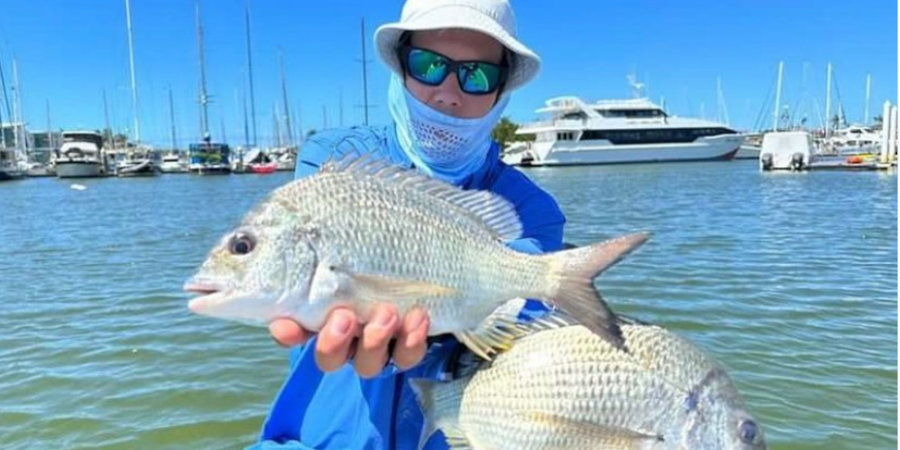
Ben Monforte’s Revolutionary Approach to Moreton Bay Bream Fishing
Ever considered using Japanese Free Rigging techniques to target bream? That’s exactly what today’s guest Ben Monforte shares with us in a fascinating techniques-based interview.
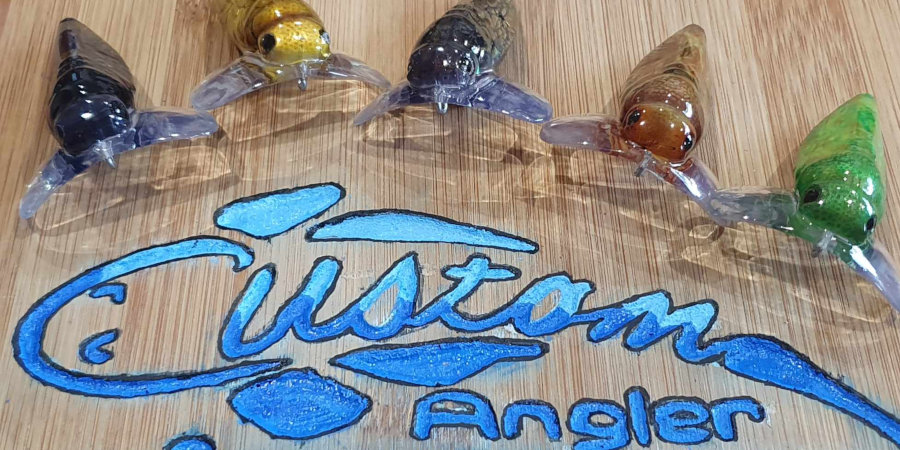
On Yamba Bream, Pimping Lures and the WRFL With Laurie Anderson
Yamba can be an exceptional fishing spot – and bream are high on the list of targets for many anglers. Tournament fisho and lure customiser Laurie Anderson shares her tips and advice in this episode.
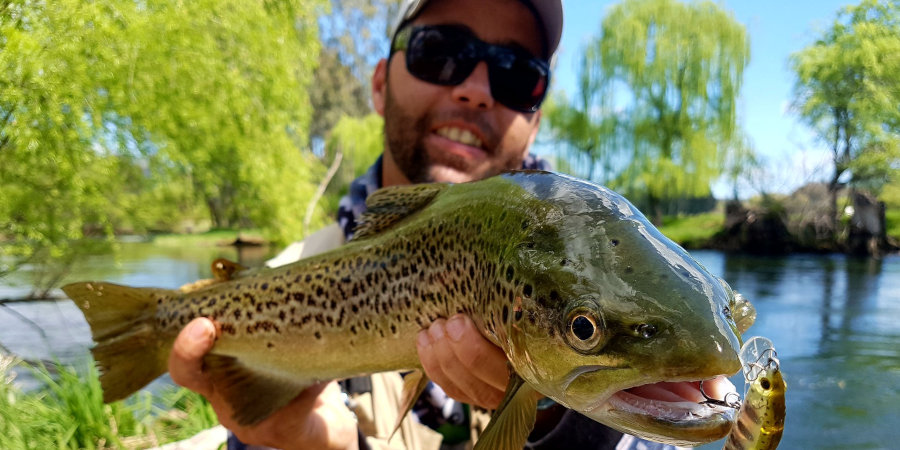
Conquering River And Stream Trout In Southern NSW With Wayne Dubois
Wayne “Mr Freshwater” Dubois has been trout fishing the river and streams of southern NSW for decades and has racked up countless quality fish over that time. Today he shares some tips for early in the season when the water is cold and clear and the trout are aggressive.
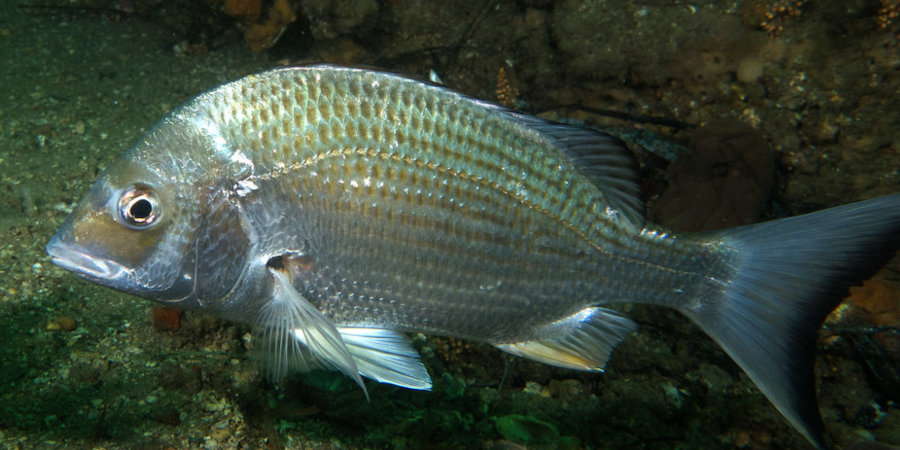
The Art Of Luring Bream
Tim “The Bream” Morgan is highly respected for his achievements on the tournament bream circuit, so when he gets chatting to fellow bream gun Andrew Death, you’d better believe that the pro tips will start flowing!
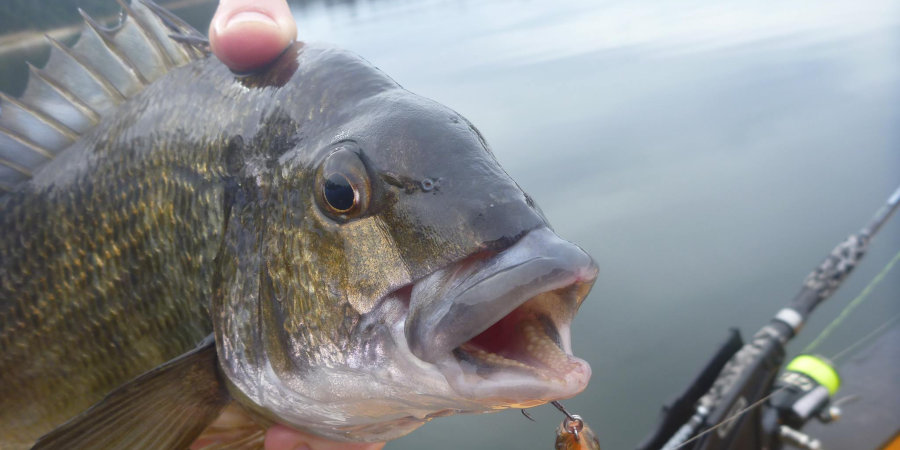
Mastering Bemm River Bream: Expert Tips from a Tournament Champion
The Bemm River system is spectacular, but not necessarily the easiest place to chase bream on lures. Luckily, we have kayak tournament champion Joel Crosbie to share his tips and advice.

Fishing In Hobart: A Bream Masterclass With Plinio And Deathy
Check out a swag of little known techniques and insights for fishing the Derwent River system for bream in this awesome interview with Plinio Taurian.

Lake Eucumbene Fishing: Mastering Trout With Nick Reay
Nick Reay has been fishing Lake Eucumbene for over three decades and understands the trout there very well. In today’s episode he share tips for stepping up your success in this system at any time of year.

Brisbane Squid Fishing Masterclass With Peter Herbst
Keen to perfect the art of catching quality squid from the shorelines of Moreton Bay? Peter Herbst’s masterclass on Brisbane Squid fishing will arm you with the knowledge you need to do exactly that. Land-based or boat based, everything you need to know is right here.
Lee’s Sponsors
Rapala Australia
Mercury Marine
Simrad Electronics
Mako Eyewear



0 Comments